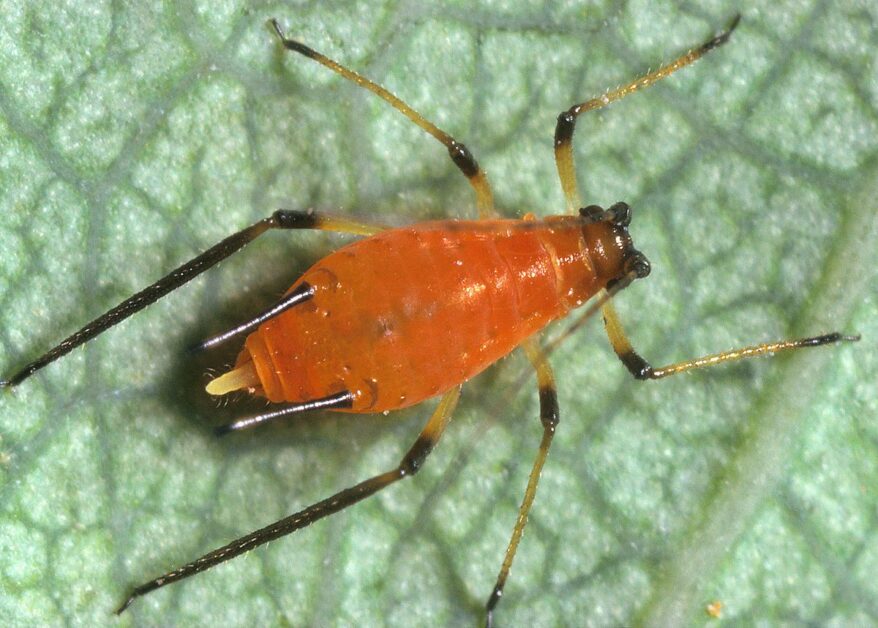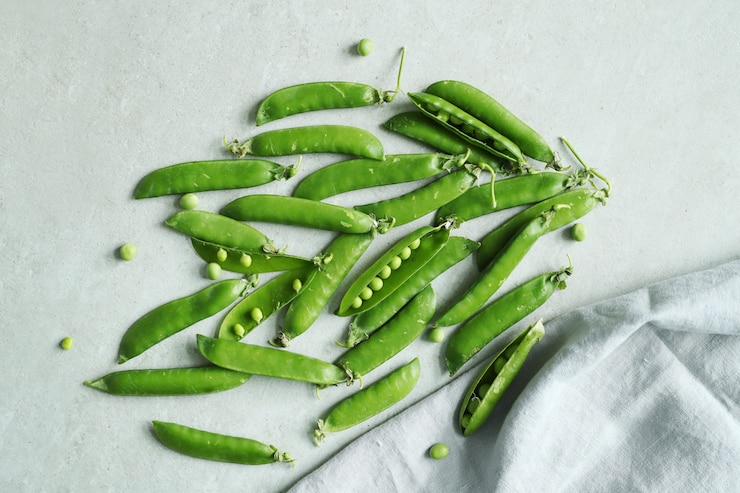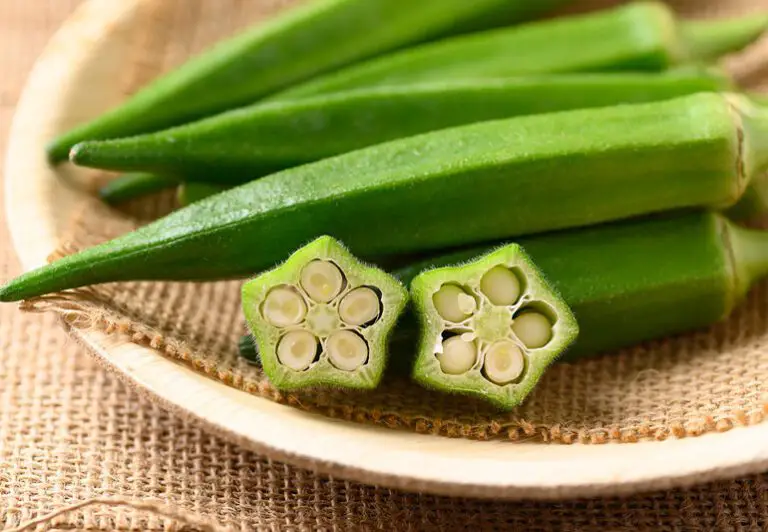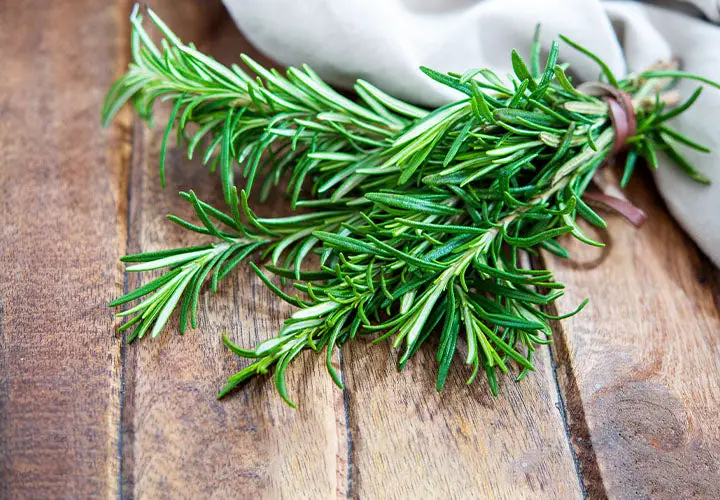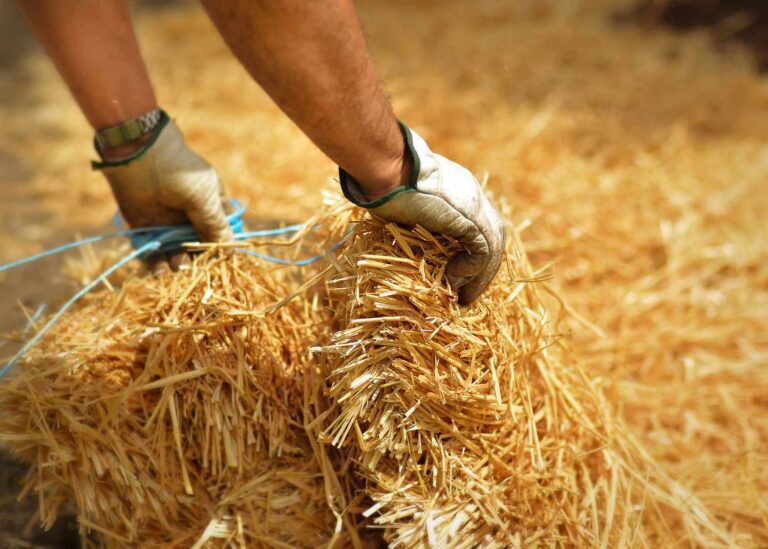Aphids: How to Deal with These Sucking Pests
“Ever noticed those tiny, pesky bugs congregating on your prized plants, sucking the life out of them? Yep, you’ve got aphids. These miniature menaces may seem harmless at first glance, but don’t be fooled – they can wreak havoc on your garden faster than you can say ‘infestation.’ But fear not, fellow gardeners! In this guide, we’re diving headfirst into the world of aphids, arming you with expert strategies to combat these sucking pests once and for all. From natural remedies to preventive measures, we’ve got you covered. So, grab your gardening gloves and let’s bid farewell to aphids, one plant at a time!”
Table of Contents
Understanding Aphids and Their Behavior
Aphids are small, soft-bodied insects that are commonly found in gardens and on indoor plants. Understanding their behavior is crucial in effectively managing and controlling their population.
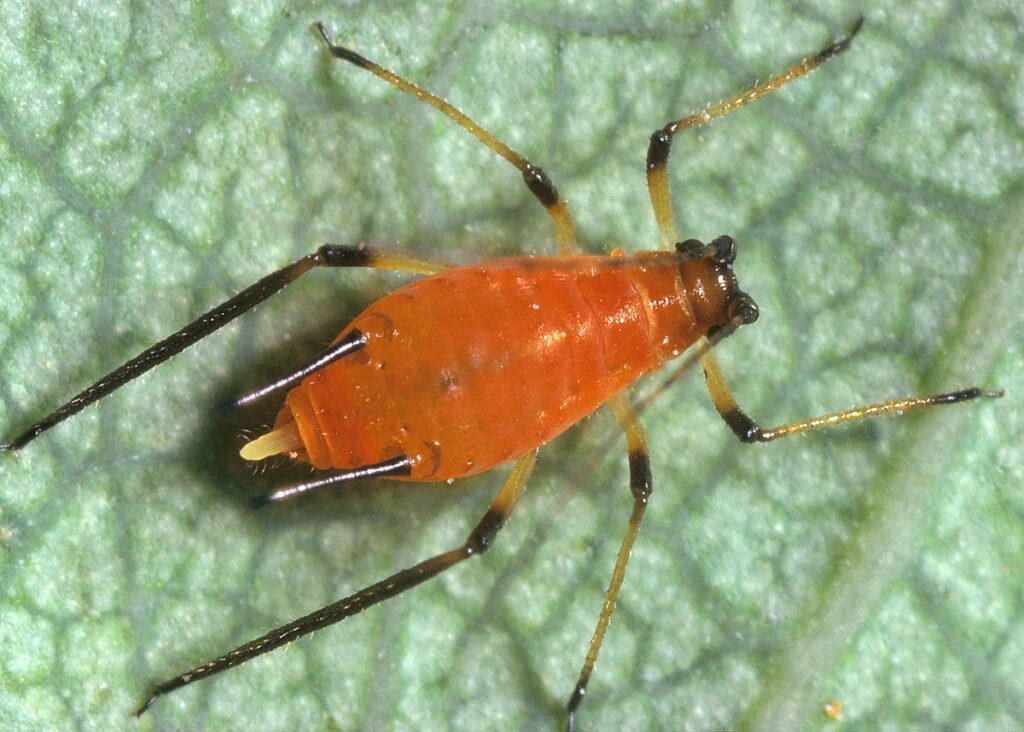
- Feeding Behavior: Aphids feed on the sap of plants by piercing plant tissues with their needle-like mouthparts. This feeding behavior results in stunted growth, distorted leaves, and weakened plants.
- Honeydew Production: Aphids excrete a sugary substance called honeydew while feeding. This honeydew can attract ants and promote the growth of sooty mold on plants.
- Reproduction Rate: Aphids are notorious for their rapid reproduction rate. One individual aphid can produce hundreds of offspring in just a few weeks.
- Live Birth: Aphids give birth to live young rather than laying eggs. This ability allows them to rapidly increase their population.
- Nymphs: The offspring of aphids, called nymphs, immediately begin feeding on the host plant. Within a week, they can mature and start producing even more nymphs.
- Cycle of Reproduction: This reproductive cycle continues throughout the growing season, leading to exponential growth in aphid populations if not controlled.
Understanding the behavior of aphids is essential for developing effective control strategies. By gaining insight into their life cycle, feeding habits, and reproductive capabilities, gardeners can implement targeted measures to prevent and manage aphid infestations.
Identifying Aphids in Your Garden or Plants
Aphids, also known as plant lice, are small insects that can wreak havoc on your garden or plants.
- Aphids belong to the order Hemiptera and are characterized by their soft bodies and piercing-sucking mouthparts.
- They can cause significant damage by extracting plant sap and secreting honeydew, promoting mold growth and attracting other pests.
- Identifying aphids is crucial for effective pest management.
- Aphids are usually found in clusters on the undersides of leaves or along new growth.
- They come in various colors like green, yellow, black, or brown, ranging from 1 to 10 millimeters in size.
- Aphids have pear-shaped bodies, six legs, and long antennae.
- Some species may have wings, enabling them to disperse and infest other plants.
- Regularly inspecting plants for aphids and their characteristic feeding damage is key to preventing severe infestations.
Natural Ways to Control Aphids
One of the most effective and environmentally friendly ways to control aphids in your garden is through natural methods. By incorporating these methods into your gardening routine, you can reduce aphid populations and protect your plants without relying on harmful chemical pesticides.
- Identify Beneficial Insects: Ladybugs, lacewings, and parasitic wasps are natural predators of aphids and can help control their populations.
- Planting Strategy: Plant flowers such as dill, fennel, and yarrow in your garden. These flowers attract beneficial insects by providing them with a source of nectar and pollen.
- Attracting Beneficial Insects: By creating a welcoming habitat with the right plants, you can attract beneficial insects to your garden.
- Encourage Predation: Once attracted, beneficial insects will feed on aphids, helping to keep their numbers in check and protect your plants from damage.
Here are some natural ways to control aphids in your garden:
| Natural Aphid Control Methods | Description |
|---|---|
| Ladybugs and Lacewings | – Introduce or attract natural predators like ladybugs and lacewings, which feed on aphids. |
| Neem Oil | – Use neem oil, a natural insecticide, to deter and disrupt the feeding behavior of aphids. |
| Garlic Spray | – Create a garlic spray by mixing crushed garlic with water and spraying it on plants; it repels aphids. |
| Insecticidal Soap | – Apply insecticidal soap, a gentle and effective solution, directly on aphids to disrupt their cell membranes. |
| Diatomaceous Earth | – Sprinkle food-grade diatomaceous earth around plants to create a barrier that damages aphids’ exoskeletons. |
| Essential Oils | – Use essential oils like peppermint, eucalyptus, or lavender in a diluted solution to repel aphids. |
| Beneficial Nematodes | – Introduce beneficial nematodes to the soil; they prey on aphids and other soil-dwelling pests. |
| Companion Planting | – Plant aphid-repelling herbs and flowers, such as basil, mint, or marigolds, near susceptible plants. |
| Aluminum Foil Reflectors | – Place reflective aluminum foil around plants to confuse and deter aphids with light reflection. |
| Pruning Infested Parts | – Prune and remove heavily infested plant parts to control aphid populations and prevent spreading. |
| Water Pressure | – Use a strong blast of water from a hose to physically remove aphids from plants. |
| Yellow Sticky Traps | – Place yellow sticky traps near plants to attract and capture flying aphids. |
| Plant Resistant Varieties | – Choose plant varieties known for resistance to aphids to reduce susceptibility. |
| Homemade Soap Spray | – Create a homemade soap spray by mixing liquid soap with water; spray on plants to deter aphids. |
| Cultural Practices | – Practice good garden hygiene, rotate crops, and maintain overall plant health to deter aphids. |
By employing these monitoring techniques, you can stay vigilant and catch aphid infestations early, allowing for effective and timely control measures in your garden. Adjust your monitoring frequency based on the specific needs of your plants and local conditions.
Using Beneficial Insects for Aphid Control
Beneficial insects are nature’s allies when it comes to controlling aphids in your garden. These tiny warriors prey on aphids and help maintain a balanced ecosystem, reducing the need for chemical interventions. Ladybugs and lacewings, for instance, are voracious aphid predators.
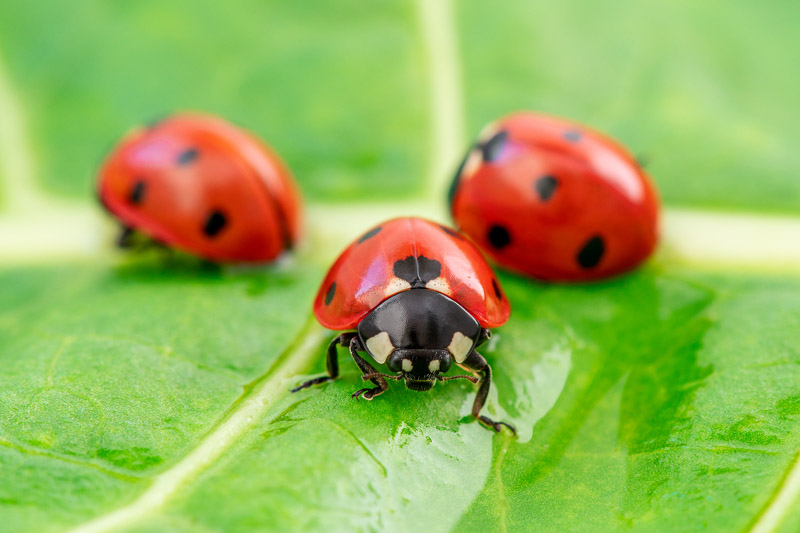
- A single ladybug can consume up to 50 aphids per day, while a lacewing larva can eat dozens of aphids during its development.
- Encouraging beneficial insects is an effective, natural, and environmentally friendly method of aphid control.
- Create diverse habitats that provide shelter, food, and water sources to attract beneficial insects.
- Plant a wide variety of flowers and herbs like dill, fennel, yarrow, and marigold to entice beneficial insects.
- These plants provide nectar for adult insects and serve as hosts for their larvae.
- Aim for a mix of plants that bloom from early spring to late fall to ensure a continuous food source.
- Avoid using broad-spectrum insecticides, as they can kill beneficial insects along with pests.
- If pesticides are necessary, choose products with little or no residual activity like insecticidal soap or horticultural oil.
Avoid using broad-spectrum insecticides, as they can inadvertently harm beneficial insects. By relying on nature’s own pest controllers, you can keep aphids in check and maintain a healthy and thriving garden ecosystem.
Chemical-Free Methods to Eliminate Aphids
When faced with an aphid infestation, it is understandable to seek solutions that are safe for both the environment and your plants. Fortunately, there are several effective chemical-free methods that can help eliminate aphids from your garden or plants.

- Encouraging Natural Predators:
- Identify natural predators of aphids such as ladybugs, lacewings, and parasitic wasps.
- These beneficial insects feed on aphids, naturally controlling their population.
- Attracting Predators:
- Plant flowers and herbs like daisies, marigolds, and fennel in your garden to attract these predators.
- Avoid using broad-spectrum insecticides to ensure the safety of beneficial insects.
- Using Homemade Sprays:
- Create a chemical-free spray using common household ingredients.
- Mix a few teaspoons of liquid dish soap with water in a spray bottle.
- Apply the solution directly to affected plants, covering leaves and stems thoroughly.
- Mechanism of Action:
- The soap disrupts the protective layer on aphids’ bodies, leading to dehydration and death.
- Test the solution on a small area of the plant first to ensure sensitivity.
Cultural Practices to Prevent Aphid Infestations
Cultural practices play a vital role in preventing aphid infestations and maintaining the health of your garden or plants. By implementing these techniques, you can create an unfavorable environment for aphids, reducing the likelihood of an infestation.
- Crop Rotation: Rotate crops each season to disrupt aphids’ life cycle and prevent population establishment.
- Good Sanitation: Regularly remove and destroy plant debris, such as fallen leaves or branches, as they can serve as hiding places for aphids.
- Weed Control: Remove weeds, as they can act as hosts and attract aphids to your garden.
- Reflective Mulches: Use reflective mulches to deter aphids.
- Resistant Plant Varieties: Select plant varieties that are resistant to aphids.
- Air Circulation: Provide adequate air circulation by spacing plants appropriately.
By combining these practices, you can create an environment that is less favorable for aphids, helping to protect your plants and ensure a successful gardening experience.
After using Blue Mountain Hay Landscaping Fertilizer to combat aphids and scale insect infestations in my garden, I discovered its remarkable effectiveness in naturally deterring these pests while promoting plant health. As an organic mulch composed of nutrient-rich materials, this fertilizer not only provided essential nutrients to my plants but also created an unfavorable environment for aphids and scale insects to thrive.
The mulch’s ability to improve soil structure and moisture retention contributed to the overall resilience of my plants, making them less susceptible to pest attacks. While it may not offer immediate eradication of pests like chemical insecticides, the long-term benefits of using Blue Mountain Hay for pest management and soil enrichment are undeniable. Overall, I found Blue Mountain Hay Landscaping Fertilizer to be a valuable ally in my efforts to maintain a healthy and pest-resistant garden naturally.
- Organic Composition: Blue Mountain Hay Landscaping Fertilizer is made from natural and organic ingredients, providing a sustainable and environmentally friendly option for nourishing plants.
- Nutrient-Rich: This fertilizer contains a balanced blend of nutrients, including nitrogen, phosphorus, and potassium, essential for promoting healthy plant growth and development.
- Soil Conditioning: The organic mulch composition of Blue Mountain Hay helps improve soil structure and fertility, enhancing water retention and drainage for optimal plant health.
- Weed Suppression: When applied as mulch, this product helps suppress weed growth by smothering weed seeds and preventing their germination, reducing the need for herbicides.
- Moisture Retention: Blue Mountain Hay acts as a protective layer over the soil, reducing moisture evaporation and minimizing water runoff, thus conserving water and promoting efficient irrigation.
- Aesthetic Appeal: The natural texture and color of this mulch add visual interest to landscaping beds, enhancing the overall aesthetic appeal of outdoor spaces.
- Decomposition Rate: Organic mulches like Blue Mountain Hay may decompose relatively quickly, requiring more frequent reapplication compared to synthetic mulches.
- Nutrient Leaching: In regions with heavy rainfall or overwatering, nutrients from the mulch may leach into the soil, necessitating additional fertilizer applications to maintain plant health.
- Potential Pest Attraction: Organic mulches can provide shelter and habitat for pests such as rodents and insects, potentially increasing pest populations in the garden.
- Initial Cost: While beneficial in the long run, the initial cost of purchasing organic mulch like Blue Mountain Hay may be higher compared to synthetic alternatives.
- Appearance Changes: Over time, organic mulches may change in appearance as they decompose, potentially requiring topping up to maintain a consistent aesthetic.
- Limited Availability: Availability of Blue Mountain Hay Landscaping Fertilizer may vary depending on location, making it less accessible for some gardeners.
Mulching Techniques for Aphid Prevention
Mulching is a valuable tool in preventing aphid infestations in your garden or plants. By creating a physical barrier between the soil and the plants, mulch can help deter aphids from reaching their desired food source.
- Organic mulch like straw, wood chips, or shredded leaves provide a protective layer and improve soil health.
- As the mulch breaks down, it releases nutrients into the soil, creating a thriving environment for plants while making it less favorable for aphids.
- Apply mulch evenly around the base of plants, extending it to cover the entire root zone.
- Organic mulch discourages aphids while helping retain moisture, regulate soil temperature, and suppress weed growth.
- Mulching is an effective cultural control method that can be combined with other organic techniques like introducing beneficial insects and using insecticidal soaps or oils.
By applying a thick layer of organic mulch around your plants, you can create an unfavorable environment for aphids while promoting healthy plant growth and soil fertility.
Companion Planting to Deter Aphids
Companion planting is a valuable strategy for not only enhancing the aesthetics of your garden, but also for deterring aphids and minimizing the need for chemical interventions. By strategically placing certain plants together, you can create a natural barrier that repels aphids and reduces the risk of infestation.
- Choose Marigolds as Companion Plants:
- Select marigolds as companion plants for deterring aphids in your garden.
- Benefits of Marigolds:
- Marigolds emit a scent that repels aphids, helping to protect your plants.
- The bright, beautiful flowers of marigolds add visual appeal to your garden.
- Attracting Beneficial Insects:
- Marigolds also attract beneficial insects such as ladybugs and lacewings.
- These insects are natural predators of aphids, further helping to control their population.
- Planting Strategy:
- Plant marigolds alongside vulnerable plants in your garden to create a fragrant and visually appealing line of defense against aphids.
Creating a Healthy Garden Environment to Discourage Aphids
To create a healthy garden environment that discourages aphids, there are several key factors to consider.
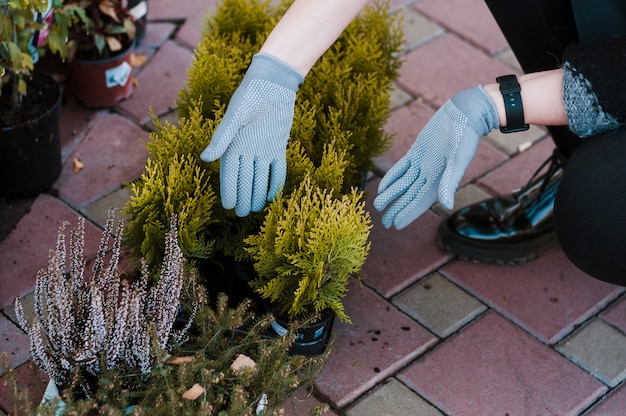
Regularly remove any dead or decaying plant material from garden bedsto prevent aphids from establishing themselves.
Aphids are attracted to weakened or stressed plants, so ensuring overall plant health through proper watering, fertilization, and optimal growing conditions is vital.
Plant a variety of different plant species in your garden to reduce susceptibility to aphid infestations.
Alternating plant types disrupts aphids’ ability to find consistent food sources, enhancing both the aesthetic appeal of your garden and its resistance to pests.
Encourage the presence of beneficial insects such as ladybugs, lacewings, and parasitic wasps in your garden.
Plant companion plants like dill, fennel, and yarrow that attract these predators, providing them with a habitat and food source to help control aphid populations naturally.
By implementing these practices, you can create an environment that is less hospitable to aphids and minimize the risk of infestations. However, it is important to remember that creating a healthy garden is an ongoing process that requires consistent attention and care. Take the time to observe your plants regularly, identify any signs of aphid activity early on, and take appropriate action to prevent further damage.
DIY Aphid Repellents and Sprays
When it comes to dealing with aphid infestations in your garden or plants, DIY aphid repellents and sprays can be a cost-effective and environmentally-friendly solution. These homemade remedies utilize common household ingredients that are known to repel these pesky insects.
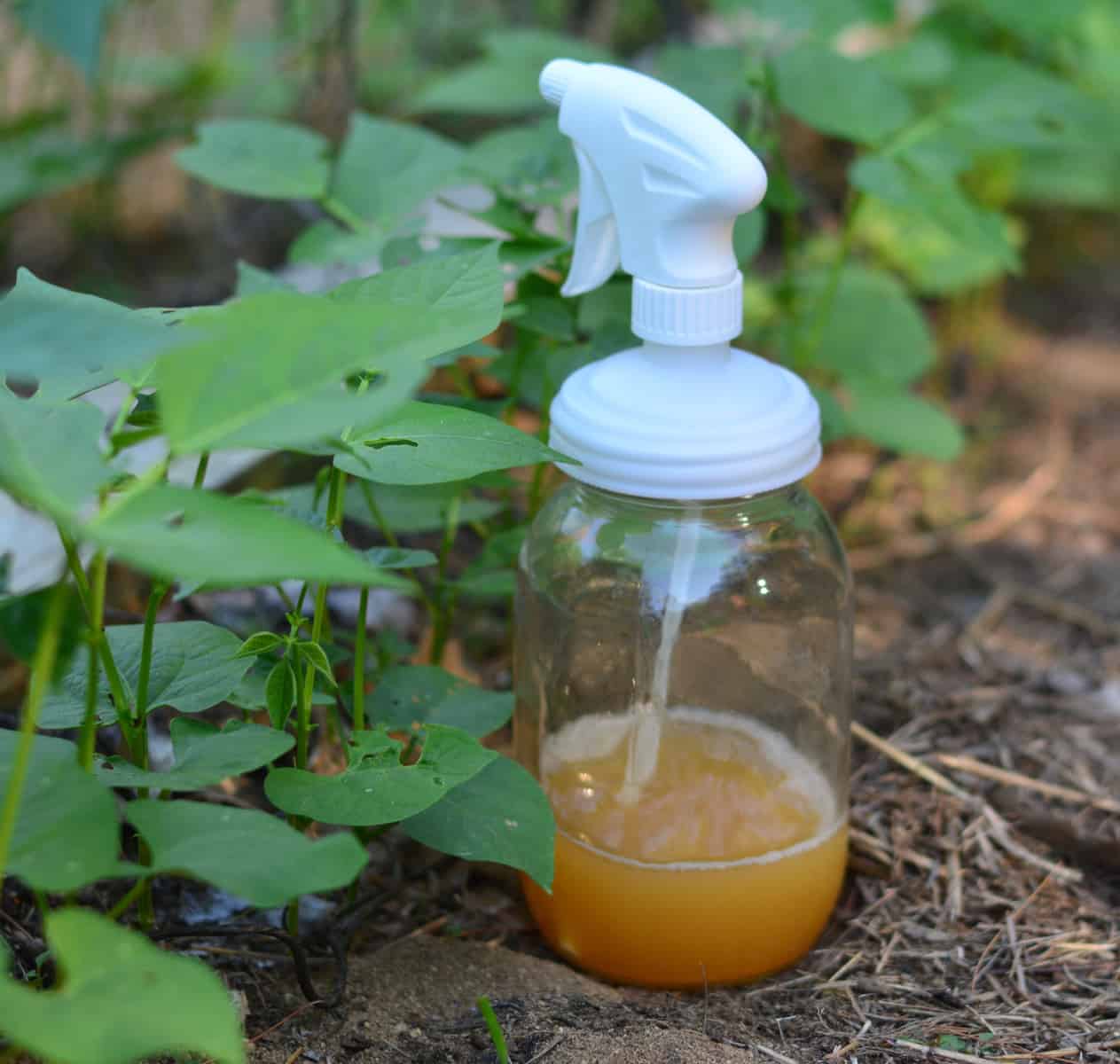
- Garlic Spray:
- Crush several cloves of garlic and mix them with water to create a garlic spray, as aphids are repelled by the strong scent of garli
- Allow the mixture to sit for a few hours, strain it, and transfer it to a spray bottle
- Apply the garlic spray to affected plants, focusing on areas with high aphid presence
- Reapply the spray every few days or after rainfall to maintain effectiveness
- Dish Soap Spray:
- Dish soap disrupts the outer waxy layer of aphids, leading to dehydration and death
- Mix a few tablespoons of dish soap with water in a spray bottle and shake well to distribute the soap evenly
- Spray the solution on aphid-infested plants, covering both the tops and bottoms of leaves
- Rinse the plants with water after a few hours to prevent any soap residue from causing damage
While DIY aphid repellents and sprays can be effective in managing aphid infestations, it’s important to note that they may not completely eliminate these pests. For severe infestations or persistent problems, it may be necessary to seek professional help or explore other methods of aphid control.
Pruning and Trimming Strategies for Aphid Control
Regular pruning and trimming of plants can be an effective strategy for controlling aphids in your garden. By removing affected leaves or stems, you can significantly reduce aphid populations and prevent their spread to other parts of the plant. It is recommended to start pruning at the first sign of aphid infestation, as early intervention is key to preventing a widespread problem.
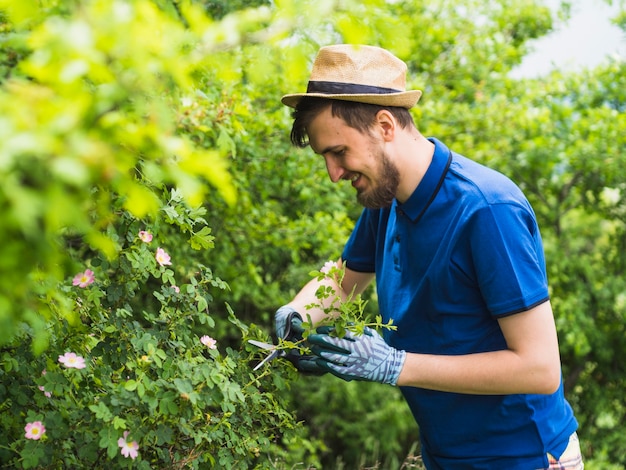
- Use clean and sharp pruning tools to minimize damage to the plant when pruning.
- Cut back and dispose of heavily infested areas, collecting and discarding the affected plant material away from your garden to avoid reinfestation.
- Regularly monitor the pruned areas for any signs of aphid resurgence.
- If new infestations are noticed, promptly prune those areas to prevent further spread.
- Regular and targeted pruning can be a crucial component in your overall aphid control strategy.
By following these pruning practices, you can effectively remove heavily infested plant parts, dispose of them properly, and monitor for any recurring infestations to maintain control over aphid populations in your garden.
Monitoring Aphid Populations in Your Garden
Monitoring aphid populations in your garden is crucial for early detection and effective control. Regular observation and assessment can help you intervene before aphid populations explode and cause significant damage to your plants. So, how can you effectively monitor aphid populations in your garden?
- Perform Regular Visual Inspections:
- Examine the leaves, stems, and buds of your plants for signs of aphids, such as clusters of tiny, soft-bodied insects or sticky honeydew residue.
- Pay special attention to vulnerable areas like the undersides of leaves and new growth, as aphids tend to prefer these parts.
- Remember to inspect different plant species, as aphids may selectively infest certain plants based on their preferences.
- Use Yellow Sticky Traps:
- Strategically place yellow sticky traps throughout your garden to capture flying aphids.
- These traps contain a sticky adhesive that immobilizes aphids upon contact.
- Monitor the number of aphids caught on the traps over time to assess the severity of the infestation.
- Consider placing traps near susceptible plants or in areas where aphids are commonly found, such as near flowering plants or along garden borders.
By diligently monitoring the aphid populations in your garden, you can stay one step ahead of these pesky pests and take appropriate measures to protect your plants. Remember, early detection is key, so don’t underestimate the importance of regular observation and assessment.
Here’s a concise guide on monitoring aphid populations in your garden:
| Monitoring Aphid Populations in Your Garden | Description |
|---|---|
| Regular Visual Inspection | – Perform routine visual inspections of plants, particularly on the underside of leaves and new growth, where aphids often gather. |
| Check for Distorted Growth | – Look for distorted or curled leaves, as aphids often cause this type of damage while feeding on plant sap. |
| Inspect Aphid Colonies | – Identify aphid colonies, which may appear as clusters of small, soft-bodied insects on plant stems, leaves, or buds. |
| Use a Hand Lens or Magnifying Glass | – Use a hand lens or magnifying glass to get a closer look at aphids, especially when monitoring smaller plants or seedlings. |
| Sticky Traps and Yellow Cards | – Place sticky traps or yellow cards near plants to capture flying aphids and monitor their presence in the area. |
| Tapping Plants for Aphids | – Tap plant stems over a white surface and observe for falling aphids; this helps detect hidden populations. |
| Examine Ant Activity | – Monitor for ant activity, as ants often “farm” aphids for honeydew. Controlling ants can disrupt aphid protection. |
| Record Observations | – Keep a gardening journal or record aphid observations, noting affected plant species, locations, and severity. |
| Look for Aphid Damage Signs | – Check for signs of aphid damage, such as yellowing leaves, stunted growth, or the presence of honeydew on plant surfaces. |
| Use Beneficial Insects as Indicators | – Observe the presence of beneficial insects like ladybugs or lacewings, which can indicate natural aphid control. |
| Implement Systematic Sampling | – Adopt systematic sampling techniques, selecting random plants for inspection to get a representative overview. |
| Digital Photography for Documentation | – Use digital photography to document aphid populations and track changes over time for more accurate monitoring. |
| Temperature and Weather Considerations | – Be aware that warmer temperatures often lead to increased aphid activity; monitor more frequently during favorable conditions. |
| Record Population Trends | – Monitor aphid population trends over the growing season to anticipate potential outbreaks and take preventive measures. |
By employing these monitoring techniques, you can stay vigilant and catch aphid infestations early, allowing for effective and timely control measures in your garden. Adjust your monitoring frequency based on the specific needs of your plants and local conditions.
Having employed the Trapro 20-Pack Dual-Sided Yellow Sticky Traps to combat aphids and scale insects in my garden, I found them to be an invaluable tool for pest control. These traps effectively captured a variety of flying insects, including aphids and scale insects, helping to mitigate infestations and protect my plants from damage. Their non-toxic adhesive ensured the safety of my plants, pets, and the environment, offering a chemical-free solution to pest management.
The dual-sided design maximized trapping efficiency, while the easy setup made them convenient to deploy throughout my garden. While the traps may inadvertently capture beneficial insects, their overall effectiveness in trapping and controlling pests outweighed any potential drawbacks. In conclusion, the Trapro Yellow Sticky Traps proved to be a reliable and eco-friendly solution for managing aphids and scale insects, contributing to the health and vitality of my garden.
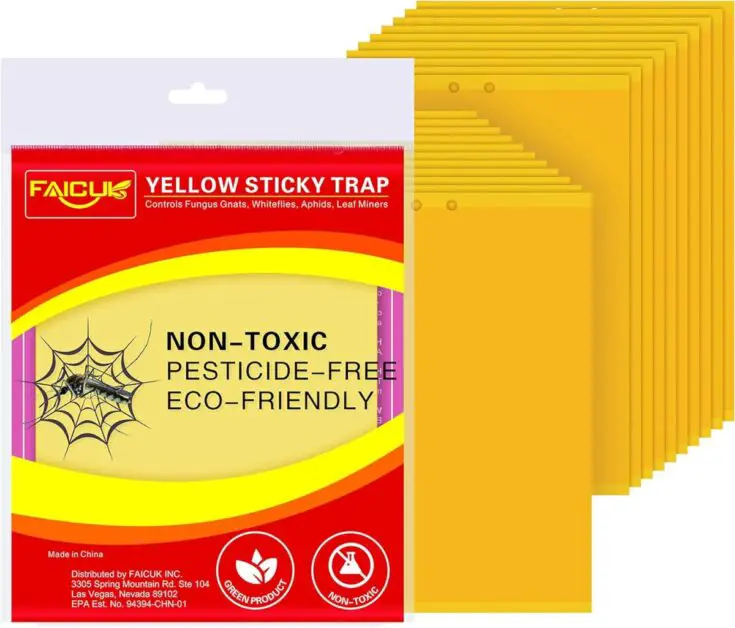
✅ Non-Toxic: These traps use a non-toxic adhesive material, making them safe to use around plants, pets, and children, without the need for harmful chemicals or pesticides.
✅ Dual-Sided Design: Featuring a dual-sided design, the traps maximize insect-catching surface area, enhancing their efficiency in attracting and trapping pests from both sides.
✅ Easy to Use: The traps come with pre-cut and pre-folded sheets, making them quick and easy to set up in gardens, greenhouses, or indoor plant environments.
✅ Long-Lasting: With a durable construction and weather-resistant adhesive, these traps can remain effective for an extended period, providing continuous pest monitoring and control.
✅ Versatile: Suitable for use in various settings, including home gardens, commercial nurseries, and agricultural fields, the Trapro Yellow Sticky Traps offer versatile pest management solutions for a wide range of plants and crops.
❌ Limited Coverage: Each trap has a finite surface area, limiting the number of insects it can trap at any given time, particularly in larger gardens or high-infestation areas.
❌ Replacement Frequency: Depending on the level of pest activity, the adhesive on the traps may become saturated and less effective over time, requiring frequent replacement to maintain optimal trapping efficiency.
❌ Attraction to Beneficial Insects: In addition to targeting pests, the traps may inadvertently capture beneficial insects such as pollinators or natural predators, impacting ecosystem balance.
❌ Environmental Impact: While non-toxic, the disposal of used traps may pose environmental concerns if not properly managed or recycled.
❌ Weather Sensitivity: Extreme weather conditions such as heavy rain or strong winds may affect the durability and effectiveness of the traps, requiring additional precautions or replacements to ensure continuous pest control.
Addressing Aphid Infestations in Indoor Plants
Indoor plants can bring life and beauty to any space, but they are not immune to aphid infestations. These tiny insects may seem harmless, but they can quickly multiply and wreak havoc on your beloved plants. So, how can you address aphid infestations in your indoor plants?
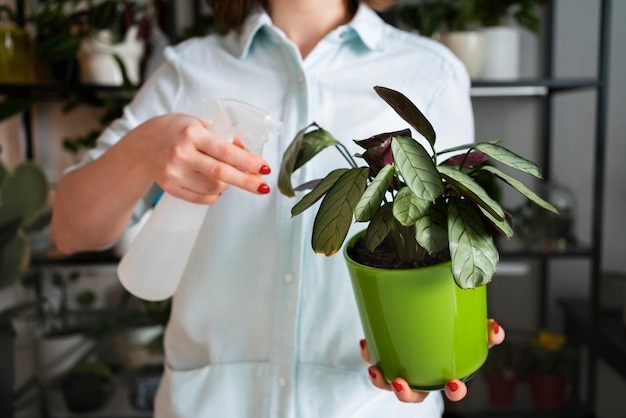
- Identify Signs of Aphid Infestation:
- Look for sticky residue on the leaves, distorted or discolored foliage, or tiny moving specks on the plant.
- These are common signs indicating the presence of aphids on your plants.
- Confirm Aphid Presence:
- Once you’ve identified the signs, confirm the presence of aphids on your plants.
- Take Action:
- Physically remove aphids by gently wiping them off the leaves with a damp cloth.
- Alternatively, spray them off with a gentle stream of water, which can dislodge and remove aphids from the plants.
- Introduce Natural Predators:
- Consider introducing natural predators such as ladybugs or lacewings to your garden.
- These predators feed on aphids and can help keep their population in check, providing effective biological control of the infestation.
Seeking Professional Help for Severe Aphid Problems
When dealing with severe aphid problems in your garden or indoor plants, it may be necessary to seek professional help. While there are many natural and DIY methods available for controlling aphids, sometimes a more intensive approach is required to alleviate the infestation. Professional pest control companies have the expertise, experience, and resources to effectively identify and eradicate aphids in a safe and efficient manner.
- Professionals utilize a range of techniques and treatments tailored to the specific needs of plants and the severity of the aphid infestation.
- They may employ targeted sprays or treatments that are potent enough to eliminate aphids yet safe for plants.
- Professionals provide ongoing monitoring and follow-up visits to prevent aphid recurrence and ensure plant health.
- Seeking professional help for severe aphid problems offers peace of mind, knowing experts are managing the issue effectively and providing optimal solutions for the specific situation.
For further information watch the video:
FAQ
What are some signs that indicate a severe aphid problem?
Signs of a severe aphid problem include distorted or yellowing leaves, sticky honeydew residue on plants, the presence of ants on plants, and a noticeable decline in plant health and vigor.
Can aphids cause serious damage to plants?
Yes, aphids can cause serious damage to plants. They feed on plant sap, which can lead to stunted growth, wilting, and even death of the plant if left untreated.
Are there any natural ways to control aphids?
Yes, there are several natural ways to control aphids. These include introducing beneficial insects like ladybugs and lacewings, using organic sprays such as neem oil or insecticidal soap, and practicing cultural methods like removing affected plant parts or creating barriers with reflective mulch.
How do I identify aphids in my garden or plants?
Aphids are small, soft-bodied insects typically found in clusters on the undersides of leaves or stems. They come in various colors, including green, black, brown, and even pink. Look for their pear-shaped bodies and long antennae.
Can companion planting help deter aphids?
Yes, companion planting can help deter aphids. Planting garlic, chives, marigolds, or nasturtiums among susceptible plants can repel aphids due to their strong scent or by attracting natural predators.
When should I consider seeking professional help for severe aphid problems?
It is recommended to seek professional help for severe aphid problems when natural or DIY control methods have been unsuccessful, and the infestation is causing significant damage to your plants or garden overall.
What are some DIY aphid repellents and sprays that can be used?
DIY aphid repellents and sprays can be made using ingredients like garlic, soap, or chili pepper mixed with water. These can be sprayed directly on the affected plants to repel and control aphids.
How can I monitor aphid populations in my garden?
Regularly inspect your plants, especially the undersides of leaves, for signs of aphid infestation. Use yellow sticky traps or shake plants over a white surface to check for the presence of aphids. Counting the number of aphids on a leaf or using a magnifying glass can also help monitor their populations.
Are there any specific pruning and trimming strategies that can help control aphids?
Pruning and trimming affected plant parts, particularly heavily infested leaves or stems, can help control aphids. It is important to dispose of the pruned material properly to prevent the spread of aphids.
Should I be concerned about aphid infestations in indoor plants?
Yes, aphid infestations in indoor plants should be taken seriously. Aphids can quickly multiply and spread to other plants, causing damage and hindering their growth. Prompt action, such as isolating affected plants and using appropriate control methods, is necessary to prevent further infestation.
What can I expect from professional help for severe aphid problems?
Professional help for severe aphid problems may involve a thorough assessment of the infestation, identification of the aphid species, and implementation of targeted control measures. These professionals may use a combination of organic and chemical methods to effectively eliminate the aphids and prevent future infestations.

Studied Agricultural Engineering-Plant Protection at University of California, Davis.
Head of Content writing team at Southelmontehydroponics.com

